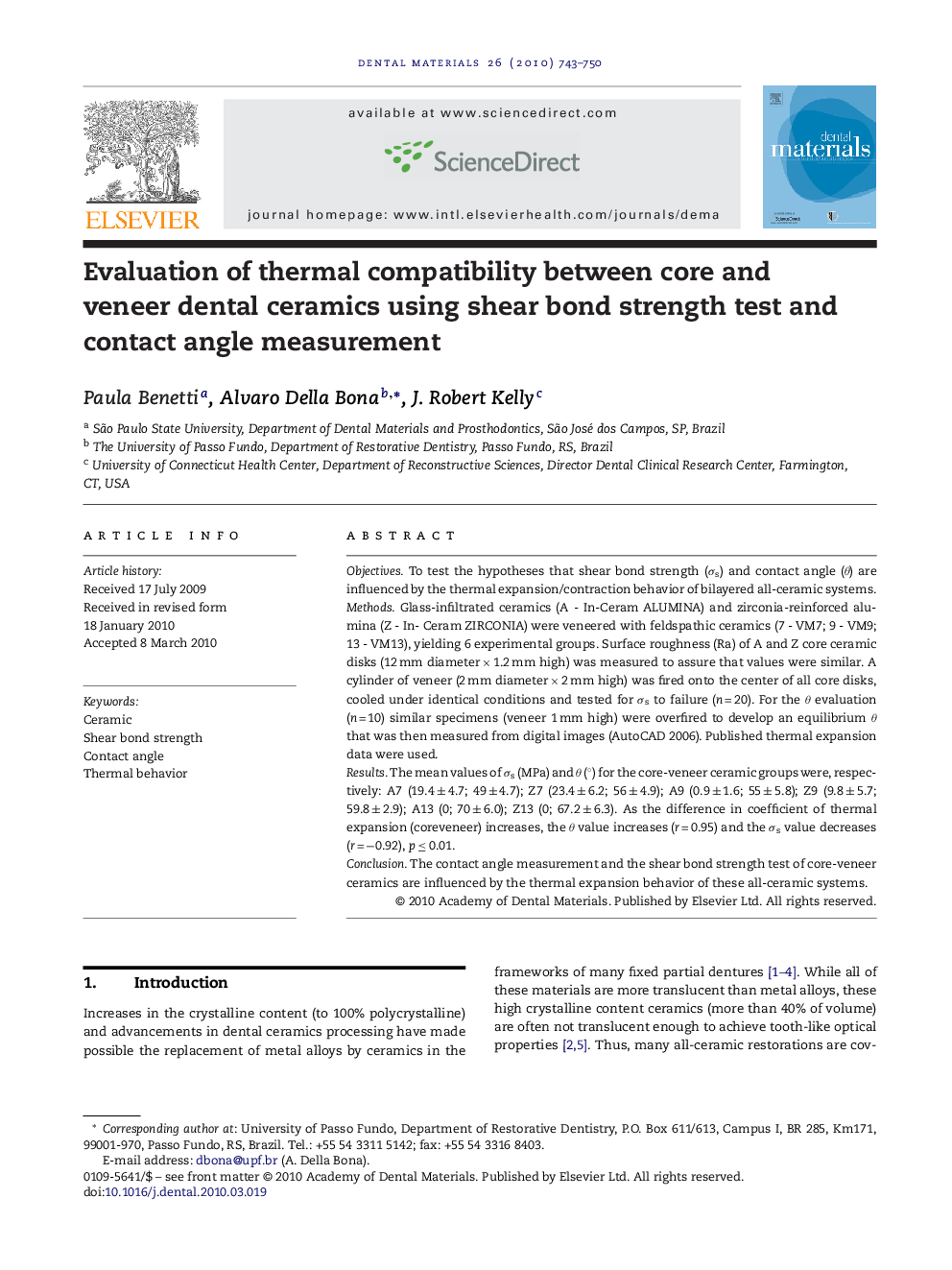| Article ID | Journal | Published Year | Pages | File Type |
|---|---|---|---|---|
| 1421529 | Dental Materials | 2010 | 8 Pages |
ObjectivesTo test the hypotheses that shear bond strength (σs) and contact angle (θ) are influenced by the thermal expansion/contraction behavior of bilayered all-ceramic systems.MethodsGlass-infiltrated ceramics (A - In-Ceram ALUMINA) and zirconia-reinforced alumina (Z - In- Ceram ZIRCONIA) were veneered with feldspathic ceramics (7 - VM7; 9 - VM9; 13 - VM13), yielding 6 experimental groups. Surface roughness (Ra) of A and Z core ceramic disks (12 mm diameter × 1.2 mm high) was measured to assure that values were similar. A cylinder of veneer (2 mm diameter × 2 mm high) was fired onto the center of all core disks, cooled under identical conditions and tested for σs to failure (n = 20). For the θ evaluation (n = 10) similar specimens (veneer 1 mm high) were overfired to develop an equilibrium θ that was then measured from digital images (AutoCAD 2006). Published thermal expansion data were used.ResultsThe mean values of σs (MPa) and θ (°) for the core-veneer ceramic groups were, respectively: A7 (19.4 ± 4.7; 49 ± 4.7); Z7 (23.4 ± 6.2; 56 ± 4.9); A9 (0.9 ± 1.6; 55 ± 5.8); Z9 (9.8 ± 5.7; 59.8 ± 2.9); A13 (0; 70 ± 6.0); Z13 (0; 67.2 ± 6.3). As the difference in coefficient of thermal expansion (coreveneer) increases, the θ value increases (r = 0.95) and the σs value decreases (r = −0.92), p ≤ 0.01.ConclusionThe contact angle measurement and the shear bond strength test of core-veneer ceramics are influenced by the thermal expansion behavior of these all-ceramic systems.
